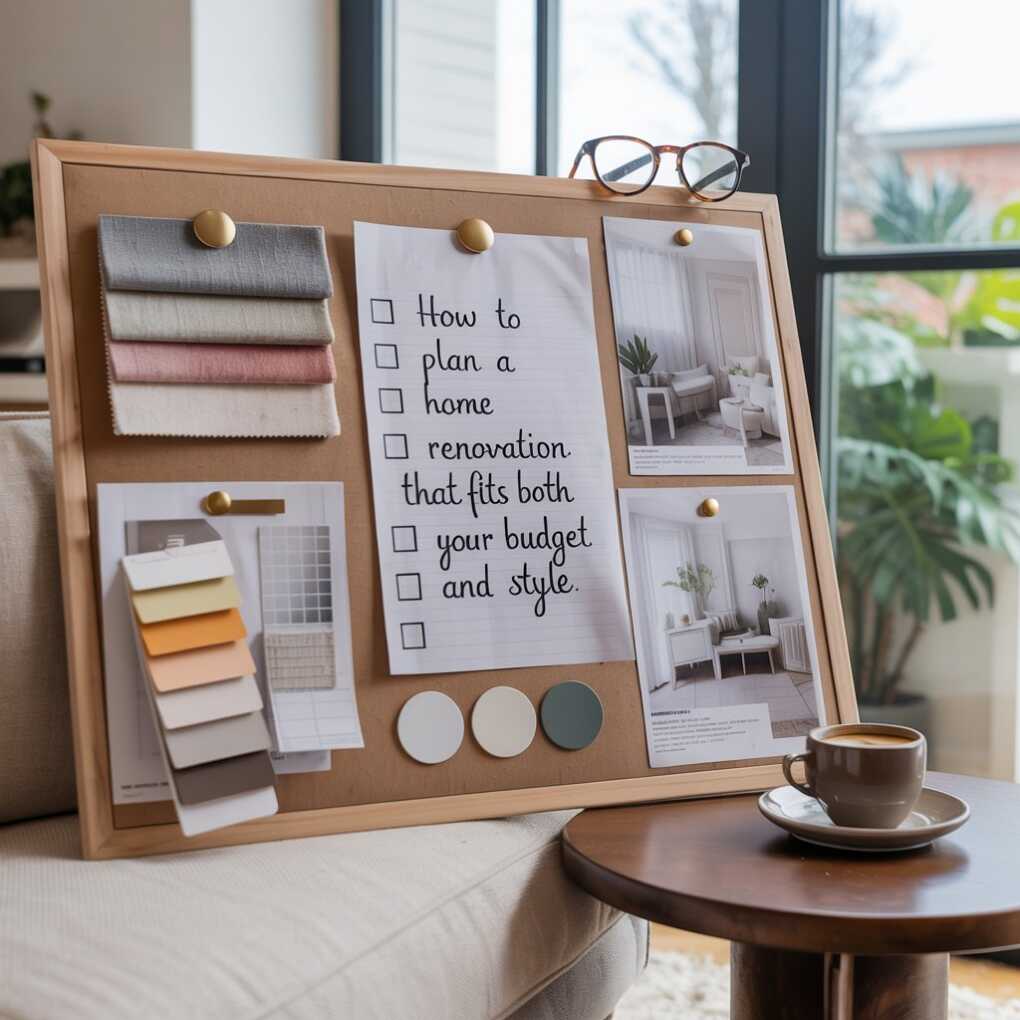A home renovation sounds exciting until you start calculating the costs and second-guessing every design choice. We’ve all been there, right?
Well, everyone wants a space that reflects their personality but doesn’t drain their savings. The truth is, finding the balance between budget and style is an art. And with a thoughtful plan, it is completely doable.
Whether you’re remodeling your kitchen, updating your bathroom, or adding an outdoor patio, planning ahead makes all the difference. The right approach helps you avoid overspending, reduces stress, and ensures that every dollar you invest adds genuine value to your home.
That said, here is how to plan your next renovation project so it stays within budget and still looks like a page out of your favorite design magazine. So, without any further delay, dive into the article!

1. Start with a Realistic Budget and a Clear Vision
Before you dive into design boards or contractor calls, take time to define your vision. What is the purpose of your renovation — more space, better function, or purely aesthetics? Clarity at the start prevents costly changes down the road.
Once you know your goals, it is time to set a realistic budget. Research the average costs of similar projects in your area and add a 10–15% cushion for unexpected expenses. Home renovations almost always uncover surprises — like wiring updates or hidden repairs — so a buffer keeps your finances safe.
Here is how to structure your budget:
- Must-haves: Core updates that improve function (e.g., plumbing, flooring, layout).
- Nice-to-haves: Design upgrades you can adjust later (lighting, décor, premium finishes).
- Emergency fund: Unexpected costs that arise mid-project.
| Pro Tip: Keep your design choices flexible. If a dream material pushes you over budget, look for similar alternatives. For example, engineered stone instead of marble or luxury vinyl instead of hardwood. |
2. Prioritize Quality Where It Matters Most
Every renovation has a few areas worth splurging on — the parts that add long-term value and daily comfort. For instance, kitchen countertops, flooring, and foundational materials should never be the cheapest options. They set the tone and durability of the entire project.
If your renovation involves exterior work or upgrades like patios, driveways, or foundations, invest in professional concrete installation from trusted contractors like BSR Renovations. A well-installed concrete base ensures structural stability, longevity, and a polished finish that complements your home’s overall design.
Here is where spending wisely pays off:
- Durable surfaces: Quality flooring and countertops reduce repair costs later.
- Professional craftsmanship: Experienced installers ensure proper measurements, leveling, and finishes.
- Energy efficiency: Upgraded insulation, windows, or appliances lower future bills.
Cutting corners on core materials might seem like a budget win, but it often leads to higher repair or replacement costs in the long run.
| Quick Tip: Think of your renovation budget like a pyramid — invest most in structure and surfaces, less in decorative details that can be updated easily. |
3. Choose a Design That Balances Trend and Timelessness
Renovation styles come and go, but your home should still feel like you ten years from now. The trick is to combine trendy touches with classic foundations.
Start by selecting a neutral base — colors, flooring, and structural finishes that will age well. Then, layer in personality through accents like paint, fixtures, or textiles. This approach allows you to refresh your space easily in the future without spending heavily.
For example:
- Use neutral wall colors like warm whites or grays that match any décor shift.
- Add texture and warmth with materials like wood, stone, or brick.
- Update with removable elements — light fixtures, handles, or rugs — instead of permanent installations.
Ultimately, a design that mixes personality with longevity ensures you stay within budget now — and love your space for years to come.
| Design Tip: Create a digital mood board before buying anything. Seeing how textures and tones play together helps you avoid mismatched purchases and regret later. |
To Sum It All Up!
Home renovation isn’t about spending the most — it is about spending smart. The key lies in planning carefully, choosing durable materials, and trusting professionals who value both form and function.
When you work with experts, you are not just getting skilled craftsmanship — you’re getting guidance that ensures every element aligns with your goals and budget.
So, whether you are updating a single room or reimagining your entire home, approach your renovation like a long-term investment. Stay true to your style, plan every detail, and let each upgrade bring you closer to a space that feels unmistakably yours — beautiful, practical, and built to last.
